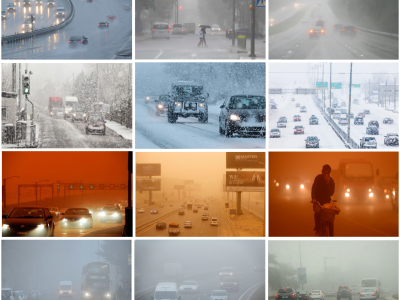DAWN: Vehicle Detection in Adverse Weather Nature

- Citation Author(s):
- Submitted by:
- mourad kenk
- Last updated:
- DOI:
- 10.21227/bw1x-yh39
- Data Format:
Abstract
Recently, self-driving vehicles have been introduced with several automated features including lane-keep assistance, queuing assistance in traffic-jam, parking assistance and crash avoidance. These self-driving vehicles and intelligent visual traffic surveillance systems mainly depend on cameras and sensors fusion systems. Adverse weather conditions such as heavy fog, rain, snow, and sandstorms are considered dangerous restrictions of the functionality of cameras impacting seriously the performance of adopted computer vision algorithms for scene understanding (i.e., vehicle detection, tracking, and recognition in traffic scenes). For example, reflection coming from rain flow and ice over roads could cause massive detection errors which will affect the performance of intelligent visual traffic systems. Additionally, scene understanding and vehicle detection algorithms are mostly evaluated using datasets contain certain types of synthetic images plus a few real-world images. Thus, it is uncertain how these algorithms would perform on unclear images acquired “in the wild” and how the progress of these algorithms is standardized in the field. To this end, we present a new dataset (benchmark) consisting of real-world images collected under various adverse weather conditions called DAWN. This dataset emphasizes a diverse traffic environment (urban, highway and freeway) as well as a rich variety of traffic flow. The DAWN dataset comprises a collection of 1000 images from real-traffic environments, which are divided into four sets of weather conditions: fog, snow, rain and sandstorms. The dataset is annotated with object bounding boxes for autonomous driving and video surveillance scenarios. This data helps interpreting effects caused by the adverse weather conditions on the performance of vehicle detection systems.
Instructions:
DAWN images are split into primary four sets by considering the adverse weather condition categories namely “fog, rain, snow, and sand”.
DAWN images are annotated using LabelMe into categories (“car”, “bus”, “truck”, “person”, “motorcycle”, “bicycle”) with two different ground-truth format (“.xml”. and “.txt”). These formats are appropriate to transform into different deep learning-based vehicles detection evaluation format such as “.json”. Each DAWN category has its images in a separate directory include its ground truth.
 4848 views
4848 views








Bingo